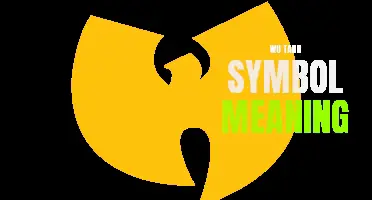
Forklifts are powerful machines used in various industries to transport heavy loads, but they also come with their own set of potential dangers. To help operators navigate these risks and ensure safe operation, forklifts are equipped with warning light symbols. These symbols convey important messages and guidelines, making them a vital aspect of forklift safety. In this article, we will explore the meaning behind these warning light symbols, giving you a comprehensive understanding of their importance and how they contribute to a safer work environment.
What You'll Learn
- What are some common forklift warning light symbols and their meanings?
- How should operators respond when they see a forklift warning light symbol?
- Are there different warning light symbols for different types of forklifts?
- Can forklift warning light symbols vary between different manufacturers?
- Are there any industry standards or regulations for forklift warning light symbols?

What are some common forklift warning light symbols and their meanings?
Forklifts are widely used in warehouses and other industrial settings to move heavy materials. They are powerful machines that need to be operated safely to prevent accidents and injuries. One important safety feature of forklifts is the warning lights that indicate potential hazards or issues with the equipment. Understanding these warning light symbols and their meanings is essential for forklift operators to ensure the safe operation of the forklift.
Here are some common forklift warning light symbols and their meanings:
- Engine Overheating: This warning light indicates that the engine's temperature is too high, which could lead to engine damage. When this light comes on, it is important to stop the forklift and allow the engine to cool down before continuing operation.
- Battery Charge: This light indicates the battery's charge level. When it comes on, it means that the battery is running low and needs to be recharged or replaced. Operating a forklift with a low battery can lead to sudden power loss, which can be dangerous.
- Seat Belt: This light reminds the operator to fasten their seat belt. Seat belts are critical for preventing injuries in case of accidents or sudden stops. It is essential for operators to always wear their seat belts when operating a forklift.
- Brake System: This light indicates there is an issue with the brake system. It could be due to low brake fluid levels, worn brake pads, or other brake-related problems. Operating a forklift with a faulty brake system can compromise safety and should be addressed immediately.
- Engine Malfunction: This light indicates a problem with the engine, such as a malfunctioning sensor or a faulty component. When this light comes on, it is important to have the forklift inspected and repaired by a qualified technician to prevent further damage.
- Low Fuel: This light indicates that the fuel level is low and needs to be refueled. Running out of fuel while operating a forklift can be dangerous, especially in hazardous areas or on slopes. Operators should always monitor the fuel level and refill as needed.
- Warning Triangle: This light is a general warning light that indicates a potential hazard or issue that requires attention. When this light comes on, it is important to stop the forklift and investigate the cause of the warning.
It is essential for forklift operators to familiarize themselves with the warning light symbols and their meanings. Regularly inspecting the forklift's warning lights before operation can help identify any potential issues and prevent accidents or breakdowns. If any warning light comes on during operation, it is important to take immediate action and address the issue to ensure the safety of the operator and those around the forklift. Additionally, operators should always follow the manufacturer's guidelines and receive proper training to operate a forklift safely.
Decoding the Meaning Behind Mickey's Beer Cap Symbols
You may want to see also

How should operators respond when they see a forklift warning light symbol?
Forklifts are essential equipment for many industries, as they help in moving heavy loads efficiently and safely. However, like any other machinery, forklifts require periodic maintenance and repairs to ensure they operate smoothly. One crucial aspect of forklift maintenance is being aware of warning lights and symbols that may appear on the dashboard. These warning lights indicate potential problems that need to be addressed promptly to prevent accidents or breakdowns. In this article, we will discuss how operators should respond when they see a forklift warning light symbol.
- Stop the Operation: When an operator notices a warning light symbol on the forklift's dashboard, the first step is to stop the operation immediately. Continuing to operate the forklift with a warning light on can potentially worsen the problem or lead to a dangerous situation. It is essential to prioritize safety and take appropriate action before proceeding.
- Identify the Warning Light Symbol: Different forklift models may have various warning light symbols, and operators should familiarize themselves with their meaning. Common warning lights include those indicating low fuel, engine or transmission issues, battery problems, brake system faults, or hydraulic system malfunctions. By understanding the specific symbol, operators can quickly identify the potential problem and take appropriate action.
- Refer to the Operator's Manual: The forklift's operator manual is a valuable resource when it comes to understanding warning lights and symbols. It provides detailed information on what each warning light means and suggests the necessary steps to resolve the issue. Operators should consult the manual to gain insights into the specific symbol and recommended responses.
- Contact the Maintenance Team: After identifying the warning light symbol and understanding its significance, operators should notify the maintenance team right away. The maintenance team consists of trained professionals who are skilled in diagnosing and repairing forklift issues. They will guide operators on the necessary steps to resolve the problem or may arrange for repairs themselves.
- Follow Proper Safety Procedures: While waiting for the maintenance team to arrive or during the process of resolving the issue, operators should continue to follow proper safety procedures. This includes parking the forklift in a designated area, setting the parking brake, and ensuring that the engine is turned off. Operators should also use warning signs, if necessary, to indicate that the forklift is out of service until the problem is resolved.
- Document the Issue: It is essential for operators to document the warning light symbol and its associated problem. This documentation can help the maintenance team in understanding the recurring issues and finding long-term solutions. Additionally, it provides a record for reference in case similar problems arise in the future.
- Conduct Regular Inspections: To minimize the occurrence of warning lights and symbols, operators should conduct regular inspections of the forklift. This can include checking fluids, battery levels, tire pressure, and examining the electrical and hydraulic systems. By identifying and addressing any potential issues in advance, operators can reduce the chances of warning lights appearing unexpectedly.
In conclusion, when a forklift operator sees a warning light symbol, it is crucial to prioritize safety and take immediate action. By stopping the operation, identifying the symbol, consulting the manual, contacting the maintenance team, following proper safety procedures, documenting the issue, and conducting regular inspections, operators can effectively respond to warning lights and ensure the smooth and safe operation of the forklift.
The Complete Guide to Cadillac Escalade Dashboard Symbols and Meanings
You may want to see also

Are there different warning light symbols for different types of forklifts?
When it comes to operating a forklift, safety is of utmost importance. One way to ensure the safe operation of a forklift is to be familiar with the warning light symbols that may be present on the dashboard. These symbols act as visual indicators to alert the operator of potential issues or hazards. While there may be variations in the specific warning light symbols used by different forklift manufacturers, there are generally some common symbols that are universally recognized in the industry.
One of the most common warning light symbols found on forklifts is the seatbelt symbol. This symbol typically looks like an icon of a person wearing a seatbelt. It serves as a reminder to the operator to always wear the seatbelt while operating the forklift. This warning light is important because it can help to prevent accidents and injuries by ensuring that the operator is securely fastened in the seat during operation.
Another commonly seen warning light symbol is the battery charge symbol. This symbol is usually in the form of a battery icon and indicates that the forklift's battery is running low and needs to be charged. It is important for operators to pay attention to this warning light and promptly recharge or replace the battery as needed to avoid unexpected shutdowns or malfunctions during operation.
In addition to these common symbols, there may be other warning light symbols specific to certain types of forklifts. For example, in forklifts equipped with propane tanks, there may be a warning light symbol indicating that the propane level is low and needs to be refilled. This is important information for the operator because running out of propane can cause the forklift to come to a sudden stop, potentially causing accidents or damage to the equipment.
Similarly, forklifts equipped with specialized attachments or features may have warning light symbols specific to those functions. For example, a forklift with an extended reach attachment may have a warning light symbol indicating the maximum safe reach distance. This allows the operator to know when they are approaching the limits of the attachment and can help prevent accidents or damage to the forklift or its surroundings.
Overall, while there may be some variations in the specific warning light symbols used by different forklift manufacturers, there are generally common symbols that are universally recognized in the industry. These symbols serve as visual indicators to alert the operator of potential issues or hazards and promote safe operation. It is crucial for forklift operators to be familiar with these symbols and their meanings to ensure the safe operation of the forklift and to prevent accidents, injuries, and damage.
Decoding the Mystical Meanings of the Monas Hieroglyphica Symbol
You may want to see also

Can forklift warning light symbols vary between different manufacturers?
Forklifts are commonly used in warehouses and other industrial settings to lift and transport heavy loads. They are equipped with a variety of safety features, including warning lights, to help ensure the safety of both the operator and those working nearby.
Forklift warning lights can vary between different manufacturers, as each manufacturer may have their own unique system of symbols and colors. It is important for operators to familiarize themselves with the warning light symbols used on the specific forklift they are operating.
Some common forklift warning light symbols include:
- Red Triangle: This symbol typically indicates a warning or danger. It may be used to indicate that the forklift is in operation or that there is a problem with the forklift that needs attention.
- Amber Circle: This symbol often indicates a caution or warning. It may be used to signal that the forklift is in reverse or that the forklift is operating in a confined area.
- Check Engine Light: This symbol typically indicates a problem with the forklift's engine or other mechanical systems. It is important for operators to pay attention to this light and report any issues to their supervisor or maintenance department.
- Seat Belt Indicator: This symbol typically indicates that the operator should fasten their seatbelt. It is important for operators to always wear their seatbelt while operating a forklift to help prevent injuries in the event of an accident or sudden stop.
- Battery Indicator: This symbol typically indicates the level of charge in the forklift's battery. It is important for operators to monitor the battery level and recharge or replace batteries as necessary to avoid unexpected downtime.
While these are some common examples of forklift warning light symbols, it is important to note that there can be variations between different manufacturers. It is always best to consult the operator's manual or receive training specific to the forklift being used to understand the warning light symbols and their meanings.
In addition to warning lights, forklifts may also be equipped with audible alarms, such as horns or beepers, to alert those nearby of their presence. These alarms are typically used when the forklift is in motion or when the operator is reversing.
Overall, forklift warning lights and symbols are an important aspect of forklift safety. Operators should be trained on the specific warning lights used on the forklift they are operating and should always follow proper safety procedures to help prevent accidents and injuries.
The Deep Meaning Behind Huichol Symbols: A Fascinating Exploration of Huichol Culture
You may want to see also

Are there any industry standards or regulations for forklift warning light symbols?
Forklifts are commonly used in warehouses, construction sites, and other industrial settings to lift and transport heavy loads. Due to their size and potential hazards, forklifts are equipped with various safety features to prevent accidents and protect both the operator and those around them. One important safety feature is the warning light symbol.
A forklift warning light symbol is used to provide a visual alert to individuals in the vicinity of a forklift. It indicates that a forklift is in operation and helps to increase visibility, especially in areas with poor lighting conditions. The warning light symbol can be displayed on the front, back, or sides of the forklift, depending on the specific regulations and requirements of the industry or organization.
While there are no specific industry standards or regulations governing the design or placement of forklift warning light symbols, there are some general guidelines that are often followed.
Firstly, the warning light symbol should be highly visible and easily recognizable. It should be bright and distinct, allowing it to be clearly visible from a distance. This is particularly important in busy industrial environments where there may be multiple forklifts operating simultaneously.
Secondly, the warning light symbol should be placed in a prominent location on the forklift. Typically, it is placed at the front or rear of the forklift, where it can be easily seen by individuals in the vicinity. Some forklifts may also have warning light symbols on the sides, especially if they operate in narrow or congested spaces.
Another important consideration is the color of the warning light symbol. In most cases, the symbol is displayed in a bright color, such as red or amber, to grab attention and signal potential danger. These colors are commonly associated with warning signs and are widely recognized as cautionary signals.
In addition to the design and placement of the warning light symbol, it is also important to regularly inspect and maintain the symbol to ensure its proper functioning. Over time, the light bulbs or LEDs used in the symbol may become dim or faulty, reducing their visibility. Regular maintenance and replacement of worn-out parts are essential to keep the warning light symbol effective.
While there are no specific industry standards or regulations for forklift warning light symbols, employers and operators should comply with applicable local regulations and guidelines. They should also consider consulting industry best practices and consulting with occupational health and safety professionals to ensure the safety of their operations.
In conclusion, forklift warning light symbols play a crucial role in alerting individuals to the presence of a forklift and promoting safety in industrial settings. While there are no specific industry standards or regulations governing their design and placement, there are general guidelines that should be followed. These include ensuring high visibility, prominent placement, and regular maintenance. Compliance with local regulations and consultation with safety professionals are also essential to ensure the safe operation of forklifts.
Decoding the Hidden Meanings of No Symbol Pokémon Cards
You may want to see also







